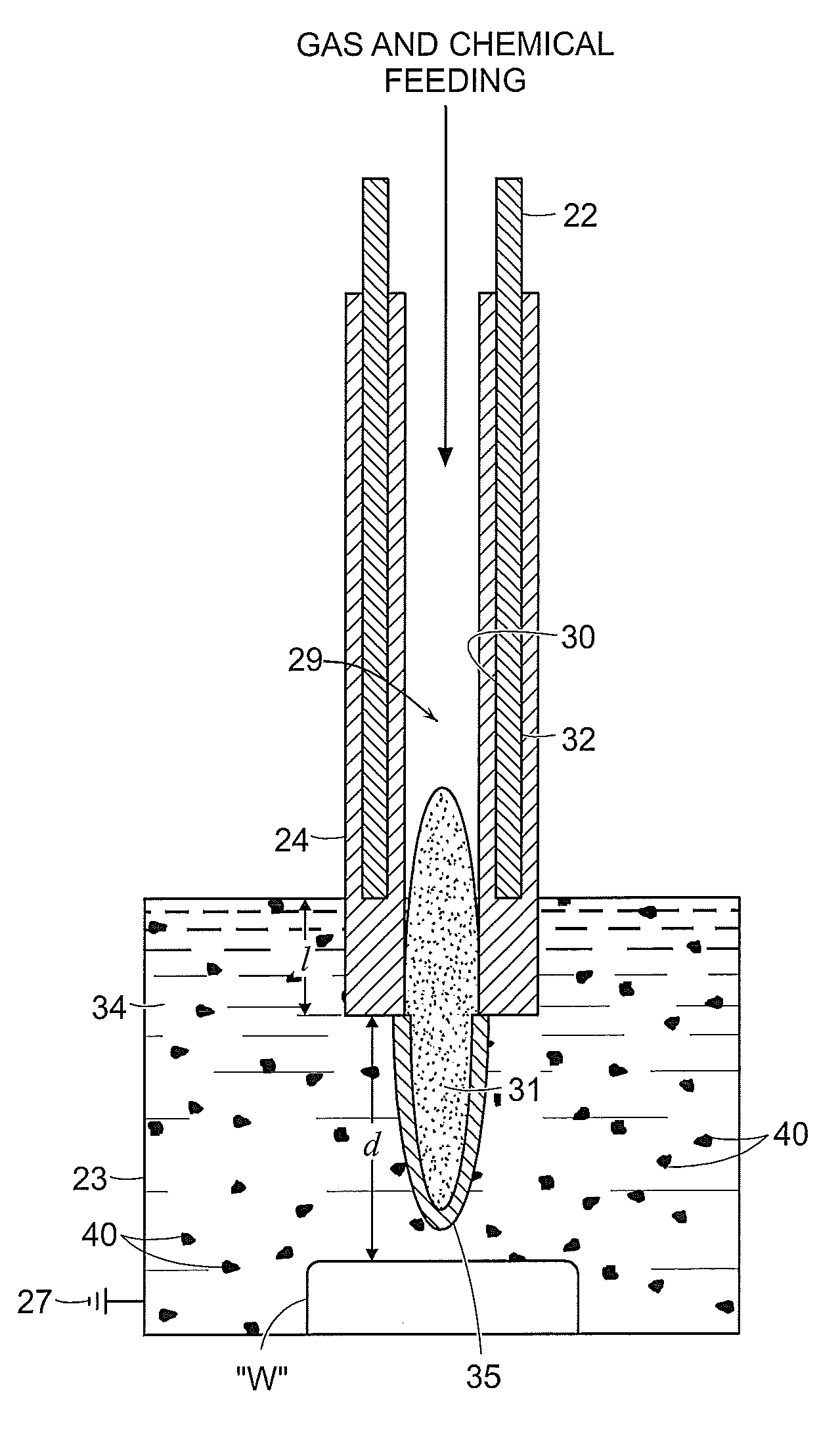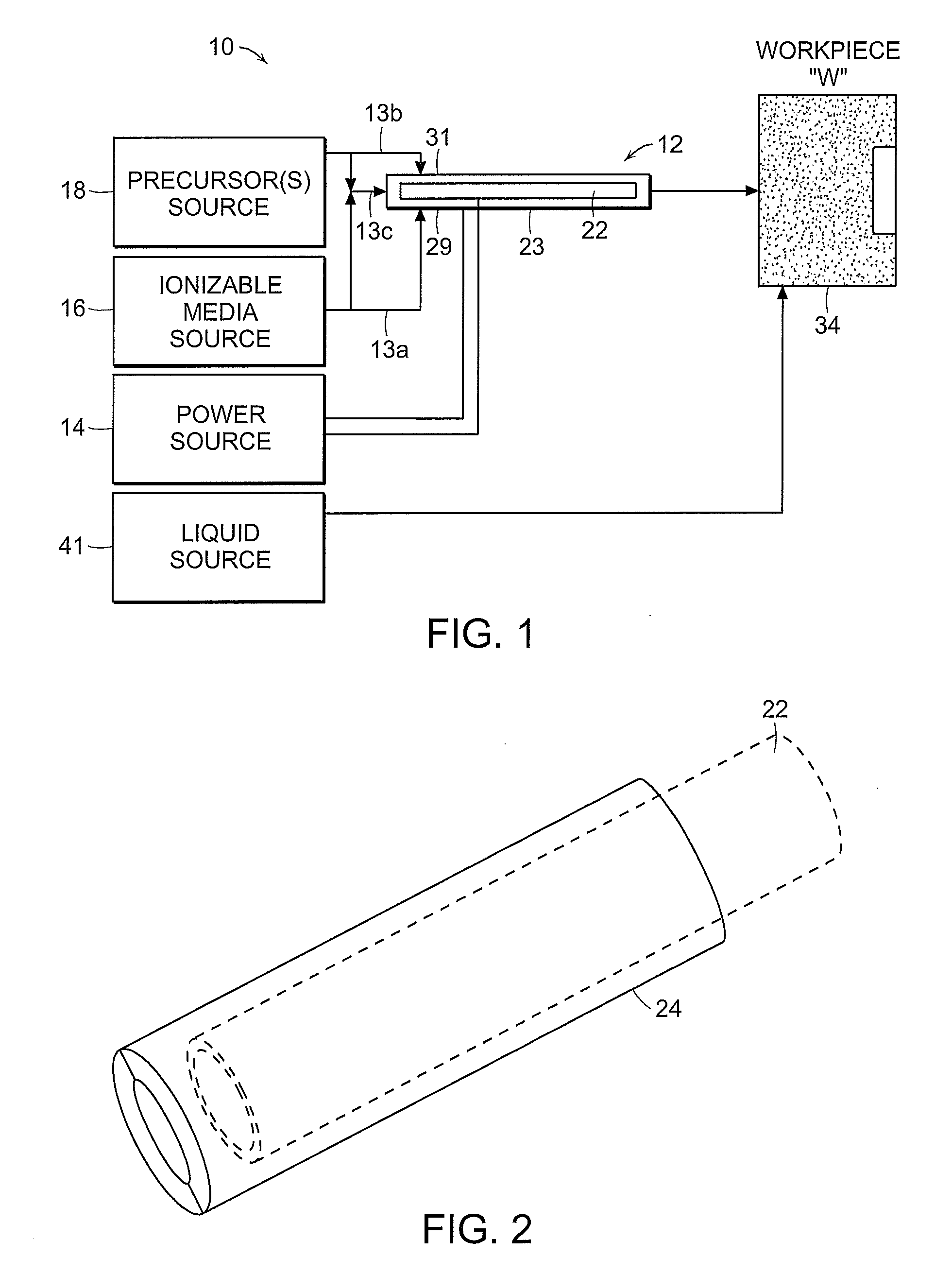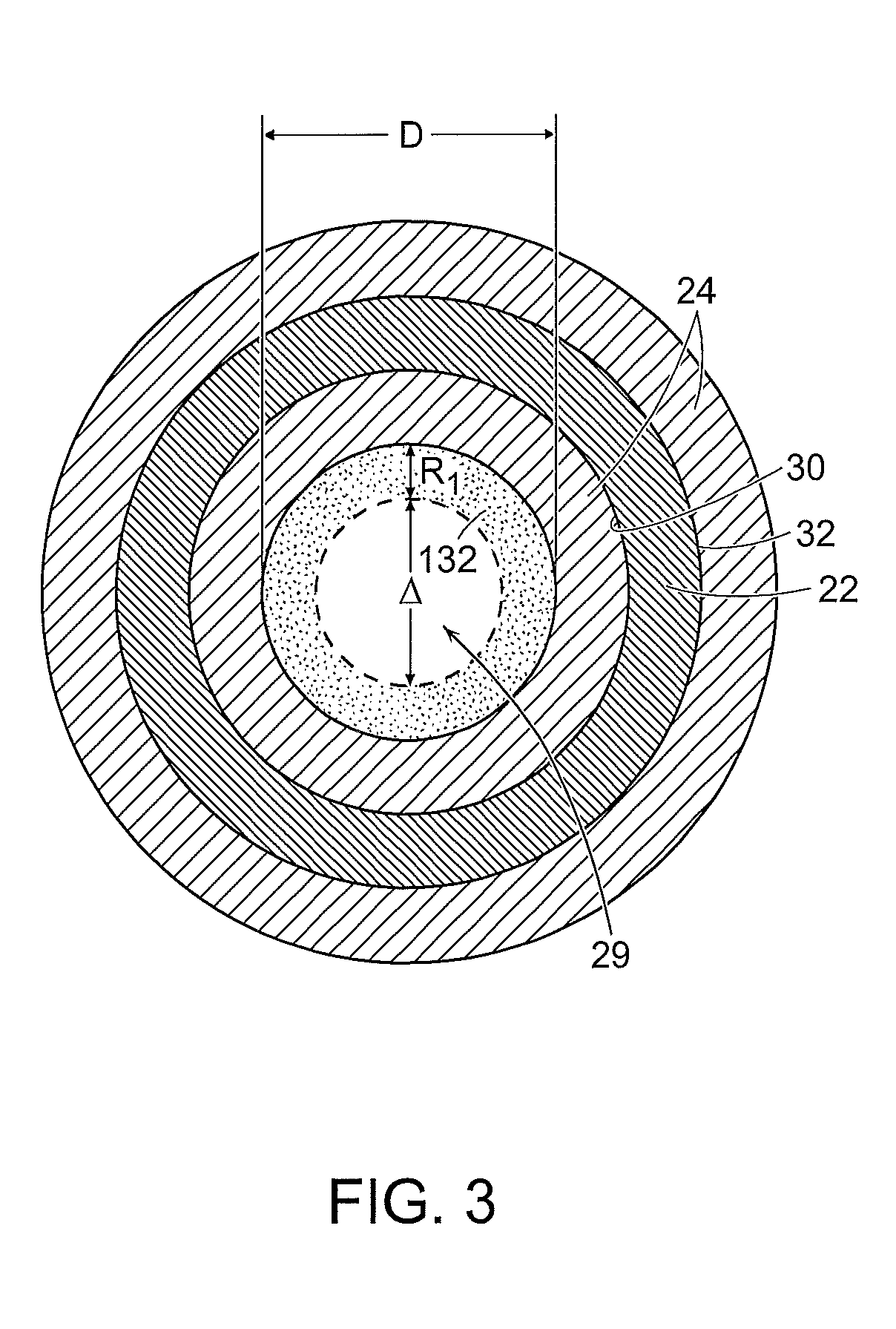Liquid-gas interface plasma device
a plasma device and liquid gas technology, applied in the field of plasma devices, can solve the problems of increased tooth sensitivity, carcinogenic risks, and alteration of enamel surface, and achieve the effects of high spatial, material selectivity, and temporal control
- Summary
- Abstract
- Description
- Claims
- Application Information
AI Technical Summary
Benefits of technology
Problems solved by technology
Method used
Image
Examples
example 1
Bone Etching
[0081]FIGS. 8A and 8B illustrate the effect of the above-discussed plasma effluent on bone tissue supplied thereto in a liquid environment. In each example, bone tissue was submerged in deionized water and NaCl was added to the water to provide chloride ions (e.g., from NaCl) as a chemical precursor for forming localized lesions. The electrode was submerged into the liquid and plasma generation was initiated and maintained for two (2) minutes. The lesion in FIG. 7A was formed using an electrode having a distal portion that is submerged to the submersion distance “d” of larger than 2 mm, whereas FIG. 7B shows the effects formed by an electrode having a distal portion submerged to the submersion distance “d” of less than 2 mm. The effects of using smaller “d” are more pronounced as illustrated in FIG. 7B, which shows charring and other tissue removal due to the hotter temperature developed at the plasma effluent. The plasma effluent produced by the device at a shallow dept...
example 2
[0083]FIG. 10 illustrates the effectiveness of the above-discussed plasma on tooth whitening. FIG. 10 shows six photographs of a tooth taken prior to treatment and at various points in the treatment process, namely, at one, two, three, four and eight minutes. The tooth was submerged in deionized water and the electrode was brought in proximity with the tooth (e.g., submerged into the liquid). Argon gas was supplied to the plasma device and plasma generation was initiated and maintained for eight minutes. The photos illustrate the gradual progression of the treatment process and complete removal of the stain from the tooth.
[0084]FIGS. 11A and 11B illustrate enlarged photos of the tooth. FIG. 11A shows the tooth at ×170 magnification illustrating the plasma treated region and a non-treated region and FIG. 11B shows the tooth at ×750 magnification in the treated region. The plasma-treated region shows a relatively smooth surface when compared with the non-treated region....
example 3
Catalysts in Liquid Media
[0086]Titanium oxide (TiO2) catalysts were added into deionized water and plasma was generated within the water medium. The effectiveness of TiO2 catalysts was measured by spectroscopy of hydroxyl (OH) and hydrogen (H) radicals, namely, H beta and H alpha radicals. As illustrated in FIGS. 13-15, which show the comparison of measured intensity for the hydroxyl, H beta and H alpha radicals were generated in deionized water and deionized water having nanoparticles of TiO2. The increased intensity is indicative of a higher concentration of the radicals, which are attributed to the addition of the catalysts.
[0087]FIG. 16 shows the absorption of methylene blue in pure deionized water and in deionized water including nanoparticles of TiO2. Methylene blue is a common indicator chemical of hydroxyl radicals since methylene blue reacts with hydroxyl radicals, which causes a change in color from blue to clear. The sample with nanoparticles had a lower absorption, indic...
PUM
 Login to View More
Login to View More Abstract
Description
Claims
Application Information
 Login to View More
Login to View More - R&D
- Intellectual Property
- Life Sciences
- Materials
- Tech Scout
- Unparalleled Data Quality
- Higher Quality Content
- 60% Fewer Hallucinations
Browse by: Latest US Patents, China's latest patents, Technical Efficacy Thesaurus, Application Domain, Technology Topic, Popular Technical Reports.
© 2025 PatSnap. All rights reserved.Legal|Privacy policy|Modern Slavery Act Transparency Statement|Sitemap|About US| Contact US: help@patsnap.com



